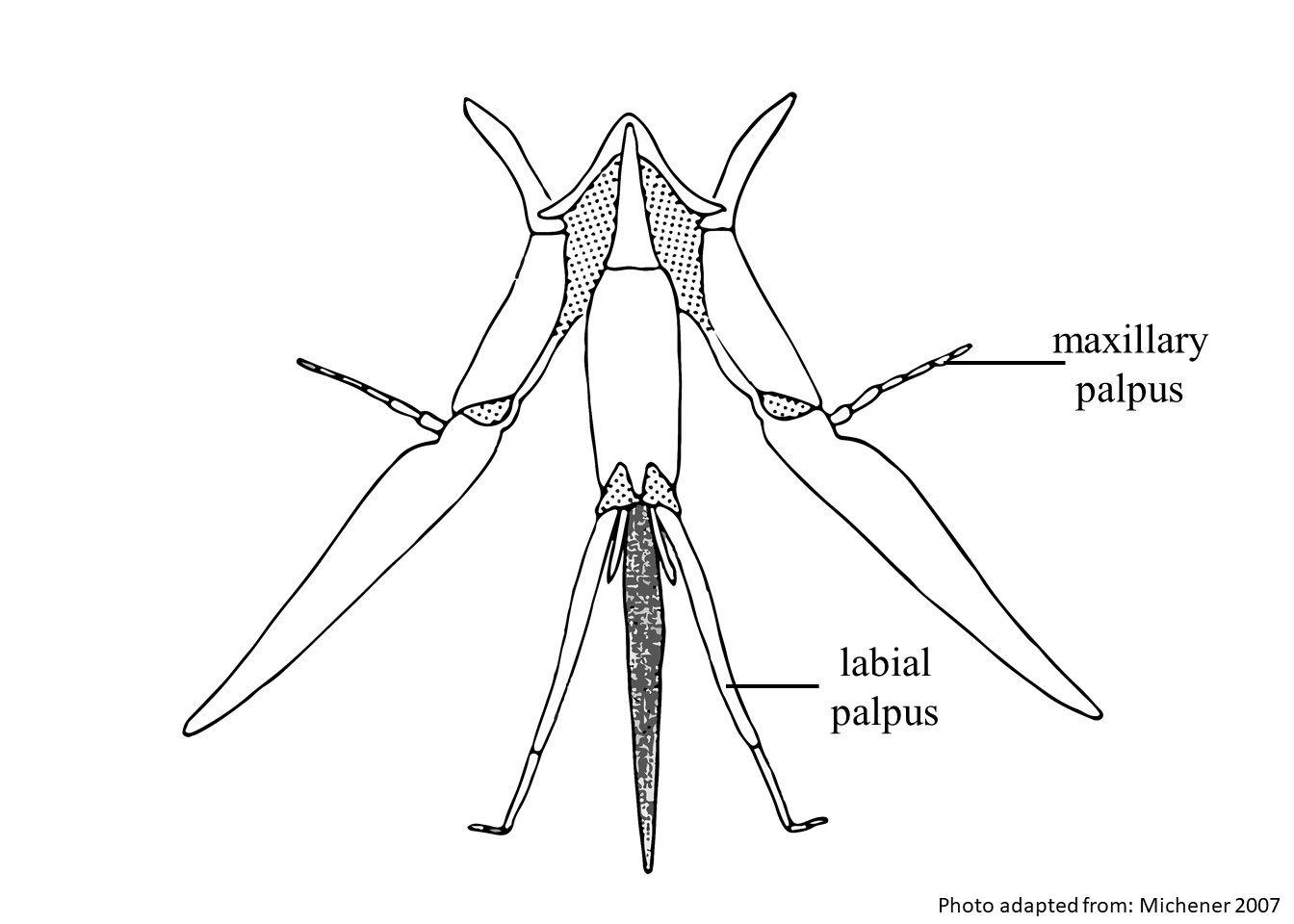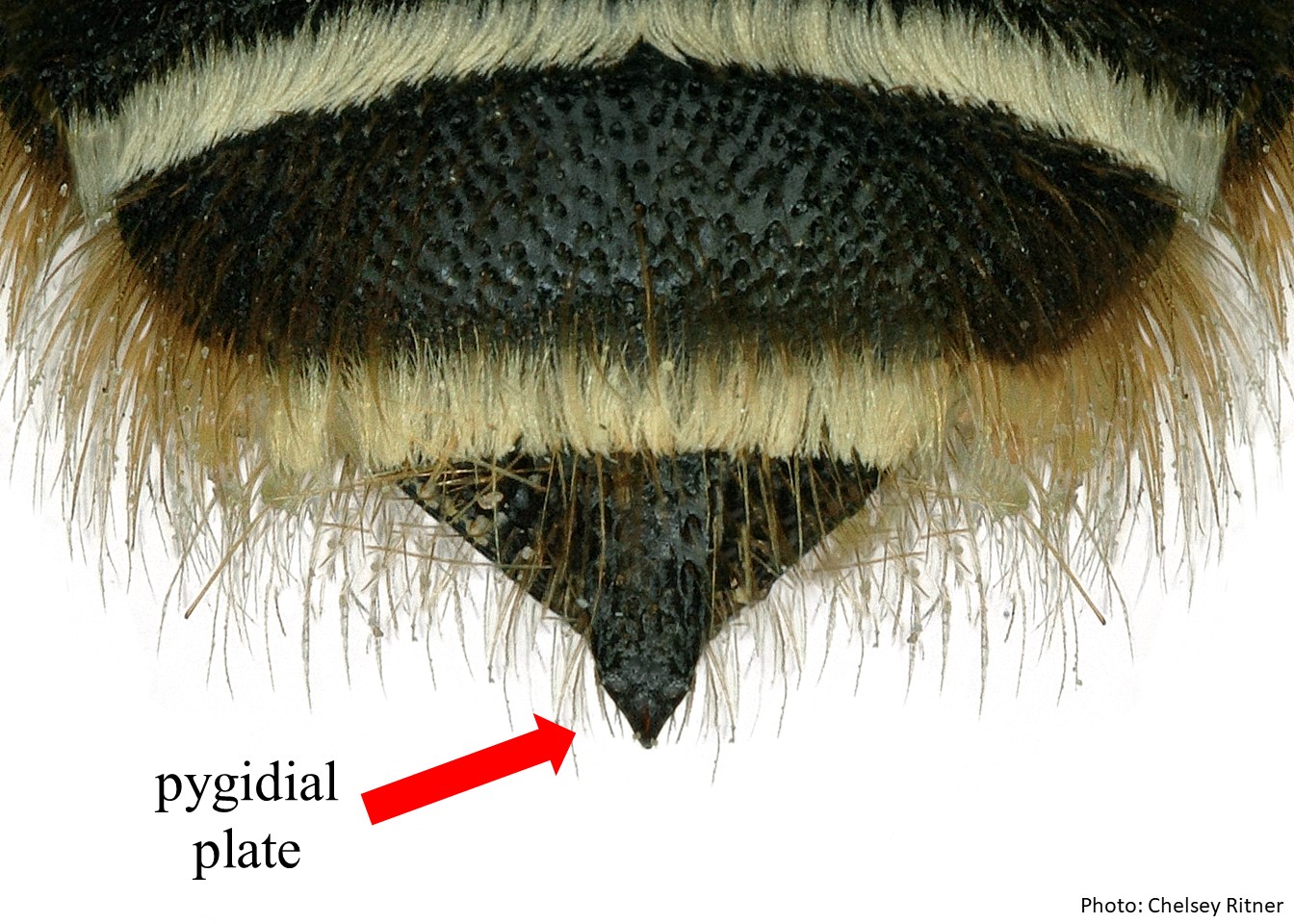Family: Megachilidae
Subfamily: Megachilinae
Tribe: Lithurgini
Genus: Microthurge Michener, 1983
Subgenera: none
Common name: none
Microthurge are slender black bees with pale bandsbands:
usually referring to bands of hair or bands of color that traverse across an abdominal segment
of hair on the tergaterga:
the segments on the top side of the abdomen, often abbreviated when referring to a specific segment to T1, T2, T3, T4, T5, T6, or T7 . They range in body length from 5–8 mm (Michener 2007Michener 2007:
. They range in body length from 5–8 mm (Michener 2007Michener 2007:
Michener, C.D. 2007. The Bees of the World (2nd ed.). Johns Hopkins University Press, Baltimore and London, 953 pp.).
(modified from Michener 2007Michener 2007:
Michener, C.D. 2007. The Bees of the World (2nd ed.). Johns Hopkins University Press, Baltimore and London, 953 pp.)
 very short, two-segmented.
very short, two-segmented. is absent.
is absent. present.
present.Microthurge may be confused with Heriades and small Hoplitis due to similar body form and size; however, the males of Heriades and Hoplitis lack a pygidial platepygidial plate:
unusually flat area (a plate) surrounded by a ridge or line and sometimes sticking well off of the end of the bee; if present, found on the sixth upper abdominal segment in females, seventh in males (Michener 2007Michener 2007:
(Michener 2007Michener 2007:
Michener, C.D. 2007. The Bees of the World (2nd ed.). Johns Hopkins University Press, Baltimore and London, 953 pp.).
There are no known invasives.
The nesting habits of most species of Microthurge are not known. Female M. corumbae excavate nests in dry rotten wood, forming cells without partitions. They may share common nest entrances; communal nesting reduces parasitism rates because some individuals guard nests while others forage (Garófalo et al. 1992). Nests may be reused by the following generation (Garófalo et al. 1992). Two types of cocoons may be formed by alternating M. corumbae generations. The first annual generation forms thin, single-layered cocoons and exhibits a short diapausediapause:
a period of dormancy during development, generally during unfavorable environmental conditions
(Mello and Garófalo 1986). Alternatively, the second generation forms thick, double-layered cocoons which, presumably, offer greater protection from predators, pathogens, or harsh climactic conditions during the extended diapausediapause:
a period of dormancy during development, generally during unfavorable environmental conditions
period (Mello and Garófalo 1986).
Microthurge occurs in South America from Cochabamba, Bolivia east to São Paulo, Brazil and south to Buenos Aires province, Argentina (Michener 2007Michener 2007:
Michener, C.D. 2007. The Bees of the World (2nd ed.). Johns Hopkins University Press, Baltimore and London, 953 pp.).
Distribution map generated by Discover Life -- click on map for details, credits, and terms of use.
Garófalo, C.A., E. Camillo, J.O. Campos, and J.C. Serrano. 1992. Nest re-use and communal nesting in Microthurge corumbae (Hymenoptera: Megachilidae), with special reference to defense. Insectes Sociaux 39:310-311.
Griswold, T.L. 1991. A review of the genus Microthurge (Hymenoptera: Megachilidae). Pan-Pacific Entomologist 67:115-118.
Mello, M.L.S. and C.A. Garófalo. 1986. Structural dimorphism in the cocoon of a solitary bee, Lithurgus corumbae (Hymenoptera, Megachilidae) and its adaptive significance. Zoologischer Anzeiger 217:195-206.
Michener, C.D. 2007. The Bees of the World (2nd ed.). Johns Hopkins University Press, Baltimore and London, 953 pp.